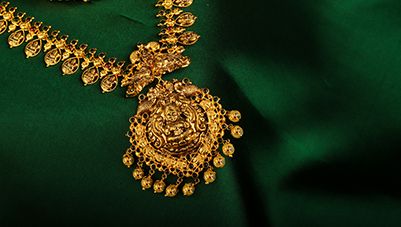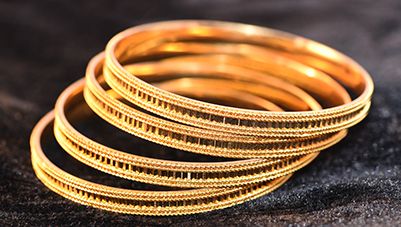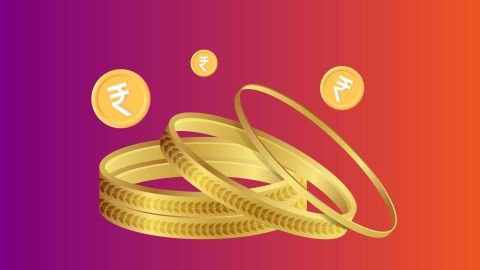Gold collateral loans, often referred to as gold loans, are a popular form of secured lending wherein borrowers pledge their gold assets as collateral to secure a loan. This type of loan is particularly prevalent in regions with a strong cultural affinity for gold, such as India. The primary advantage of gold collateral loans lies in their quick processing time and relatively low-interest rates compared to unsecured loans. Lenders offer loans based on the market value of the gold pledged, providing borrowers with immediate access to funds for various needs, including business expansion, education, or personal emergencies. The simplicity and speed of obtaining a gold loan make it an attractive option for those in need of urgent financial assistance. Additionally, the borrower retains ownership of the gold, which is returned upon full repayment of the loan, ensuring the asset remains secure and intact.
Benefits of gold collateral loans
Gold collateral loans offer numerous benefits to borrowers. Firstly, they provide a quick and easy source of funds, as the approval process is typically faster than that of other secured loans. This is because the value of the collateral (gold) is easily ascertainable, reducing the need for extensive credit checks and documentation. Secondly, these loans often come with lower interest rates compared to unsecured loans, making them a cost-effective borrowing option.
Additionally, gold collateral loans are accessible to a broad range of borrowers, including those with lower credit scores, as the gold serves as security for the loan. Another significant benefit is the flexibility in loan utilisation; borrowers can use the funds for a variety of purposes, from personal emergencies to business investments. Lastly, gold collateral loans typically have flexible repayment options, allowing borrowers to choose terms that best suit their financial situation.
How do gold collateral loans work?
Gold collateral loans operate on a simple mechanism. Borrowers approach a lender, such as a bank or financial institution, with their gold assets. The lender assesses the purity and weight of the gold to determine its market value. Based on this valuation, the lender offers a loan amount, usually a percentage of the gold's current market value, which can range from 60% to 90%. Once the loan terms are agreed upon, the borrower hands over the gold to the lender, who securely stores it for the duration of the loan. The borrower receives the loan amount, which can be used for any purpose. During the loan tenure, the borrower is required to make regular interest payments. Upon repayment of the full loan amount and interest, the lender returns the gold to the borrower. In case of default, the lender has the right to sell the gold to recover the outstanding loan amount.
Features of collateral loans
Collateral loans are secured loans that require borrowers to pledge an asset as security to access funds. These loans come with a range of features that make them an attractive option for individuals looking to meet different financial needs.
One of the key features of a collateral loan is lower interest rates. Since the loan is secured by an asset, lenders face lower risk, which allows them to offer competitive interest rates compared to unsecured loans. This makes repayment more manageable for borrowers.
Collateral loans offer flexibility in loan amounts and repayment tenure. The amount you can borrow depends on the value of the pledged asset, such as gold, property, or fixed deposits. The repayment period is also flexible, making it suitable for both short-term and long-term financial needs.
Another significant feature is fast loan approval and disbursal. Lenders prioritise collateral loans since they have the security of an asset. Once the asset’s value is assessed, the loan amount is disbursed quickly, sometimes within a few hours.
Additionally, borrowers retain ownership of the pledged asset throughout the loan tenure. Once the loan is repaid, the asset is returned to the borrower. This makes collateral loans a risk-free way to meet financial requirements without liquidating valuable assets.
From business investments to personal expenses, collateral loans provide a secure, cost-effective financing option for individuals across various needs.
Assets eligible for collateral
When applying for a collateral loan, lenders require you to pledge an asset that holds monetary value to secure the loan. These assets act as a form of security for the lender, reducing their risk. Different financial institutions accept a wide range of assets as collateral, depending on their policies and the type of loan.
One of the most common assets used as collateral is real estate, which includes residential or commercial properties. Lenders prefer this asset due to its long-term value and stability. Gold jewellery is another popular collateral option, especially in India, where many people leverage their gold to access quick funds.
Fixed deposits held with the same bank or financial institution are also widely accepted. These are particularly appealing to borrowers as they continue earning interest on the deposit even during the loan tenure. Additionally, vehicles, such as cars, can be used as collateral for loans like car loans or personal loans.
In some cases, investments like shares, bonds, or mutual funds can also be pledged, depending on the lender's policies. However, not all lenders accept these assets, and the value of such investments may fluctuate, impacting the loan amount.
Always ensure the pledged asset meets the lender's criteria and holds sufficient value to secure the loan amount you need. Bajaj Finance offers a loan of up to Rs. 2 crore against 18-22 karat gold jewellery to help you meet your needs in time.
Eligibility criteria for gold collateral loans
Eligibility criteria for gold collateral loans are generally straightforward, making them accessible to a wide range of borrowers. Typically, any individual who owns gold jewellery, coins, or bars can apply for a gold loan. The borrower must be an adult, usually above 18 years of age, and possess valid identification and address proof. Some lenders may also require proof of income, although this is not always mandatory given the secured nature of the loan.
The quality and purity of the gold being pledged play a crucial role in determining the loan amount. Generally, lenders prefer gold of higher purity, such as 22-carat or 24-carat gold, as it holds more value. Additionally, the gold must be owned by the borrower and not be subject to any existing liens or encumbrances. Meeting these basic eligibility criteria ensures a swift approval process and access to funds.
Step-by-step guide to using gold as collateral
Using gold as collateral to secure a loan is a straightforward process. Here's a step-by-step guide to help you navigate the procedure:
- Evaluate your gold: Gather your gold jewellery, coins, or bars and assess their purity and weight, as these factors determine the loan amount.
- Choose a lender: Research and select a reputable lender, such as a bank or a financial institution, that offers favourable terms for gold loans.
- Application: Visit the chosen lender with your gold and necessary documents, including identification and address proof. Fill out the loan application form.
- Gold appraisal: The lender will appraise the gold to ascertain its market value. This involves checking the purity and weight of the gold.
- Loan offer: Based on the appraisal, the lender will make a loan offer, usually a percentage of the gold's value. Review and agree to the terms.
- Receive funds: Upon agreement, hand over the gold to the lender for secure storage. You will then receive the loan amount in your bank account.
- Repayment: Make regular interest payments during the loan tenure. Repay the principal amount as per the agreed schedule.
- Gold retrieval: Once the loan and interest are fully repaid, the lender will return your gold.
Types of gold accepted as collateral
When applying for a gold collateral loan, it's essential to know the types of gold that lenders typically accept as collateral. Generally, lenders prefer high-purity gold, as it holds more value and offers better security for the loan. With Bajaj Finance, you can get a gold loan of Rs. 2 crore against 18-22 carat gold.
It's important to note that not all lenders accept every type of gold. Some may have restrictions on the type or condition of gold items they accept. Therefore, it's advisable to check with the lender beforehand to ensure your gold assets qualify as acceptable collateral.
Advantages of using gold as collateral
Using gold as collateral for a loan offers several significant advantages. Firstly, gold loans are processed quickly, providing borrowers with immediate access to funds. The approval process is streamlined, as the value of the collateral is easily ascertainable, reducing the need for extensive credit checks. Secondly, gold loans often come with lower interest rates compared to unsecured loans, making them a more affordable borrowing option. Additionally, these loans are accessible to a broad range of borrowers, including those with lower credit scores, as the gold itself secures the loan.
Another advantage is the flexibility in loan usage; funds can be used for various purposes, from personal emergencies to business investments. Furthermore, borrowers retain ownership of their gold, which is returned upon full repayment of the loan, ensuring that their valuable asset remains intact. Lastly, gold loans typically offer flexible repayment options, accommodating different financial situations.
Understanding repayment terms for gold collateral loans
Repayment terms for gold collateral loans are designed to be flexible and accommodating, ensuring borrowers can manage their loan obligations effectively. Typically, they include monthly, bi-monthly, quarterly, half-yearly or annual instalments, allowing borrowers to choose a schedule that best suits their financial situation. The loan tenure can range from a month to a year, depending on the borrower's requirements. Interest rates for gold loans are generally lower than those for unsecured loans, providing a cost-effective borrowing solution.
Bajaj Finance offers the option of paying only the interest during the loan tenure, with the principal amount due at the end of the term. Additionally, prepayment of the loan is usually allowed without any penalties, offering further flexibility. Understanding these repayment terms helps borrowers plan their finances effectively and ensures timely repayment, which is crucial for retrieving the pledged gold.









 Food & Beverages
Food & Beverages Grocery
Grocery Fashion
Fashion Beauty & Personal Care
Beauty & Personal Care Health & Wellness
Health & Wellness Home & Kitchen
Home & Kitchen
 Loan Against Shares
Loan Against Shares Loan Against Mutual Funds
Loan Against Mutual Funds Loan Against Bonds
Loan Against Bonds Loan Against Insurance Policy
Loan Against Insurance Policy ESOP Financing
ESOP Financing Two-wheeler Loan
Two-wheeler Loan Loan for Lawyer
Loan for Lawyer Industrial Equipment Finance
Industrial Equipment Finance Industrial Equipment Balance Transfer
Industrial Equipment Balance Transfer Industrial Equipment Refinance
Industrial Equipment Refinance Easy EMI Loan
Easy EMI Loan
 Smartphones
Smartphones Air Conditioner
Air Conditioner Led TVs
Led TVs Air Coolers
Air Coolers Refrigerators
Refrigerators Washing Machines
Washing Machines Laptops
Laptops

 Trading Account
Trading Account Open Demat Account
Open Demat Account Margin Trading Financing
Margin Trading Financing Share Market
Share Market Invest in IPO
Invest in IPO All stocks
All stocks Top gainers
Top gainers Top losers
Top losers 52 week high
52 week high 52 week low
52 week low
 Business Loan
Business Loan Secured Business Loan
Secured Business Loan Loan against property
Loan against property Loans against property balance transfer
Loans against property balance transfer Loan against shares
Loan against shares Home Loan
Home Loan Loans against mutual funds
Loans against mutual funds Loan against bonds
Loan against bonds Loan against insurance policy
Loan against insurance policy
 Term Life Insurance
Term Life Insurance ULIP Plan
ULIP Plan Savings Plan
Savings Plan Retirement Plans
Retirement Plans Child Plans
Child Plans Investment Plans
Investment Plans
 Get Bajaj Prime
Get Bajaj Prime
 ULIP Plan
ULIP Plan Savings Plan
Savings Plan Retirement Plans
Retirement Plans Child Plans
Child Plans Free Demat Account
Free Demat Account Invest in IPO
Invest in IPO Invest in Stocks
Invest in Stocks Margin Trading Facility
Margin Trading Facility
 Check your Credit Score
Check your Credit Score
 Bike
Bike Scooter
Scooter Electric Vehicle
Electric Vehicle Best Sellers
Best Sellers Popular Brands
Popular Brands
 New Car Loan
New Car Loan Used Car Loan
Used Car Loan Loan Against Car
Loan Against Car Car Loan Balance Transfer and Top-up
Car Loan Balance Transfer and Top-up
 Engagement Zone
Engagement Zone Game Zone
Game Zone
 Personal Loan EMI Calculator
Personal Loan EMI Calculator Personal Loan Eligibility Calculator
Personal Loan Eligibility Calculator Home Loan EMI Calculator
Home Loan EMI Calculator Home Loan Eligibility Calculator
Home Loan Eligibility Calculator Good & Service Tax (GST) Calculator
Good & Service Tax (GST) Calculator Flexi Day Wise Interest Calculator
Flexi Day Wise Interest Calculator Flexi Transaction Calculator
Flexi Transaction Calculator Secured Business Loan Eligibility Calculator
Secured Business Loan Eligibility Calculator Fixed Deposits Interest Calculator
Fixed Deposits Interest Calculator Two wheeler Loan EMI Calculator
Two wheeler Loan EMI Calculator New Car Loan EMI Calculator
New Car Loan EMI Calculator Used Car Loan EMI Calculator
Used Car Loan EMI Calculator All Calculator
All Calculator
 Hot Deals
Hot Deals Clearance Sale
Clearance Sale Kitchen Appliances
Kitchen Appliances Tyres
Tyres Camera & Accessories
Camera & Accessories Mattresses
Mattresses Furniture
Furniture Watches
Watches Music & Audio
Music & Audio Cycles
Cycles Mixer & Grinder
Mixer & Grinder Luggage & Travel
Luggage & Travel Fitness Equipment
Fitness Equipment Fans
Fans
 Personal Loan for Doctors
Personal Loan for Doctors Business loan for Doctors
Business loan for Doctors Medical Equipment Finance
Medical Equipment Finance Secured Business Loan
Secured Business Loan Loan against property
Loan against property Loan against share
Loan against share Gold Loan
Gold Loan Home Loan
Home Loan
 Smartphones
Smartphones Air Conditioners
Air Conditioners LED TVs
LED TVs Air Coolers
Air Coolers Refrigerators
Refrigerators Washing Machines
Washing Machines Laptops
Laptops Water Purifiers
Water Purifiers Tablets
Tablets Kitchen Appliances
Kitchen Appliances Mattresses
Mattresses Furniture
Furniture Music and Audio
Music and Audio Cameras & Accessories
Cameras & Accessories Cycle
Cycle Watches
Watches Tyres
Tyres Luggage & Travel
Luggage & Travel Fitness Equipment
Fitness Equipment
 Home Loan
Home Loan Transfer your existing Home loan
Transfer your existing Home loan Loan against Property
Loan against Property Home Loan for Salaried
Home Loan for Salaried Home loan for self employed
Home loan for self employed Home Loan EMI Calculator
Home Loan EMI Calculator Home Loan eligibility calculator
Home Loan eligibility calculator Home Loan balance transfer
Home Loan balance transfer
 Offer World
Offer World
 Articles
Articles
 Overdue Payments
Overdue Payments Other Payments
Other Payments
 Document Center
Document Center Bank details & Documents
Bank details & Documents Tax Invoice Certificate
Tax Invoice Certificate
 Do Not Call Service
Do Not Call Service
 Your Orders
Your Orders Hamara Mall Orders
Hamara Mall Orders

 Fixed Deposit (IFA) Partner
Fixed Deposit (IFA) Partner Loan (DSA) Partner
Loan (DSA) Partner Debt Management Partner
Debt Management Partner EMI Network Partner
EMI Network Partner Become a Merchant
Become a Merchant Partner Sign-in
Partner Sign-in
 Food & Shopping
Food & Shopping Credit Card Hub
Credit Card Hub ULIP Plans
ULIP Plans Top Gainers Stock
Top Gainers Stock Top Losers Stock
Top Losers Stock Saving Plan
Saving Plan Term Insurance
Term Insurance
 Live Videos
Live Videos





















